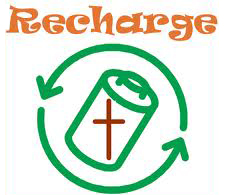
Charger & Batteries Essentials
Charger & Batteries Essentials
The continually expanding market for portable equipment is creating an increasing demand for improved battery performance and operating life. To meet these criteria the capacity and capability of rechargeable cells has steadily increased, from the introduction of commercial nickel cadmium (NiCd) and sealed lead acid (SLA) batteries in the 1960's to the more recent introduction of nickel metal hydride (NiMH) and lithium ion (Li-I, or Li+) technologies. Each cell type has its advantages, but the decision which to use in a particular application may well depend on economic considerations as much as technical desirability.
Battery essentials
Some operational and charging characteristics of the most common secondary cell types are shown in the table. Performance will vary according to manufacturer, so these data should be used only for guidance. The maximum permitted charge rates will vary, but from this and the Ampere-hour capacity (C) of the cell, fast charging times can be calculated according to the formulae shown. Bear in mind that these are rules of thumb, based on extensive experience, and that returned capacity is very dependent on the initial condition and age of the cells.
|
SLA(AGM) |
NiCd |
NiMH |
Li+/Li-polymer |
|
|
Energy Density (Wh/kg) |
30 |
40 |
60 |
100 |
|
Operating Cycles(Typical) |
300 |
800 |
500 |
800 |
|
Operating Temperature (°C) |
0~35 |
0~45 |
0~40 |
0~50 |
|
Max Charge Current (A) |
0.25C |
2C |
1C |
1C |
|
Charge Method |
Constant Voltage |
Constant Current |
Constant Current |
Constant Current/Voltage |
|
Fast Charge Time (h) |
C/A + 2 hours |
C/A + 20% |
C/A + 20% |
C/A × 2 |
Matching chargers to batteries
Users like a charger that will charge batteries as fast as possible. But speed is not the only factor when it comes to designing a charger. If charging can be carried out overnight, the appropriate trickle charger can be very compact, since it does not have to source much current. It is also likely to be lightweight, easily portable and relatively inexpensive to produce.
Sealed lead acid batteries require current limited constant voltage charging. For SLA batteries in standby use, continuous charging at 2.25V/cell is adequate. At this potential, the battery will not overcharge and may remain connected indefinitely without incurring damage. The equivalent for NiCd and NiMH is an overnight (14h) constant current charge at 0.1C. While most SLA and NiCd cells are suited to long term trickle charge, for NiMH, charging must be terminated to prevent damage.
But what are the factors that need to be considered when specifying a fast charger? Very high fast-charge rates can be detrimental to the overall lifespan of the cells. It is not necessarily a prime consideration of battery manufacturers to warn about reduced lifespan and realistic recharge cycles and, if they do, the details may not be that clear. Successful fast charging at rates of up to 2C requires intelligent monitoring of battery parameters at all stages in the charging cycle. The latest generation of intelligent chargers can address the effects of protection circuitry and variations in operating temperature and contact resistance. An essential feature of fast chargers is the automatic reduction in charge rate before the onset of overcharge and subsequent rise in temperature and pressure.
The charging characteristics of NiCd and NiMH cells are similar, although NiMH generates more heat during charge and peak voltage is less apparent. Various constant current fast charge termination techniques are used in both cell types. These include dV/dt, the rate of change of voltage close to peak voltage; -dV, the fall in cell voltage beyond peak; and cell temperature sensing at full charge. Circuitry for reforming and conditioning abused, unformed or old cells prior to bulk charging is also highly desirable for nickel-based cells. Obviously, all of these features come with a price, but without this sophistication, serious damage can be done to the cells, limiting both capacity and lifetime, as well as risking safety issues.
The charging of Li-I cells is similar to SLA, both requiring current limited constant voltage. However, for Li-I, it is vital that the charger incorporates end point current cutoff and a fail-safe timer for overall protection. Due to the specific requirements for individual applications, Li-I charging systems should be integrated with the battery pack design at the earliest opportunity in the design process. The new generation of Lawtronics intelligent Li-I chargers meets the criteria set by the cell manufacturers and can be configured to suit most OEM requirements.
Battery technology is slowly but steadily continuing to evolve, and intelligent charger design can ensure that the maximum benefits are delivered to the user.

